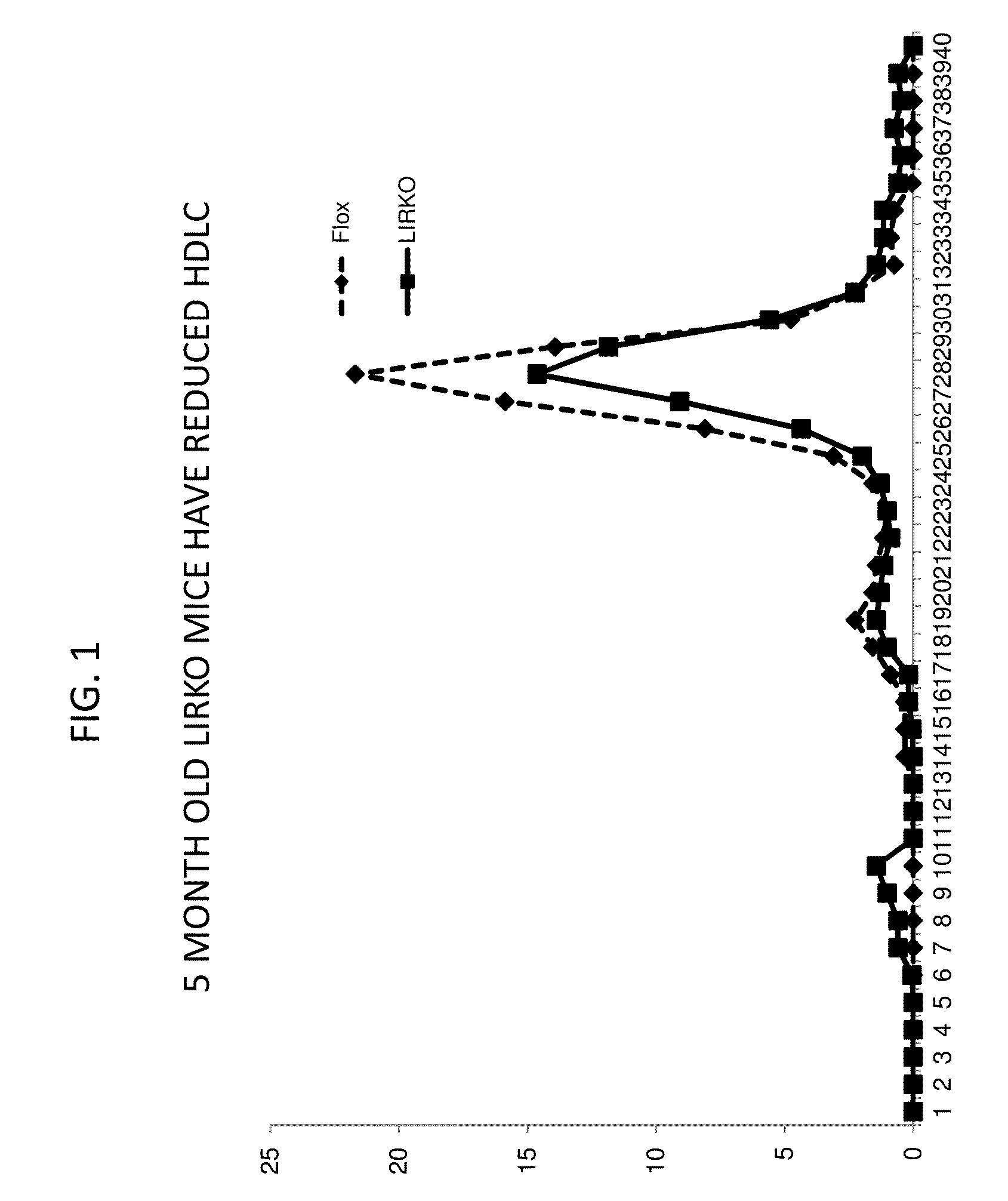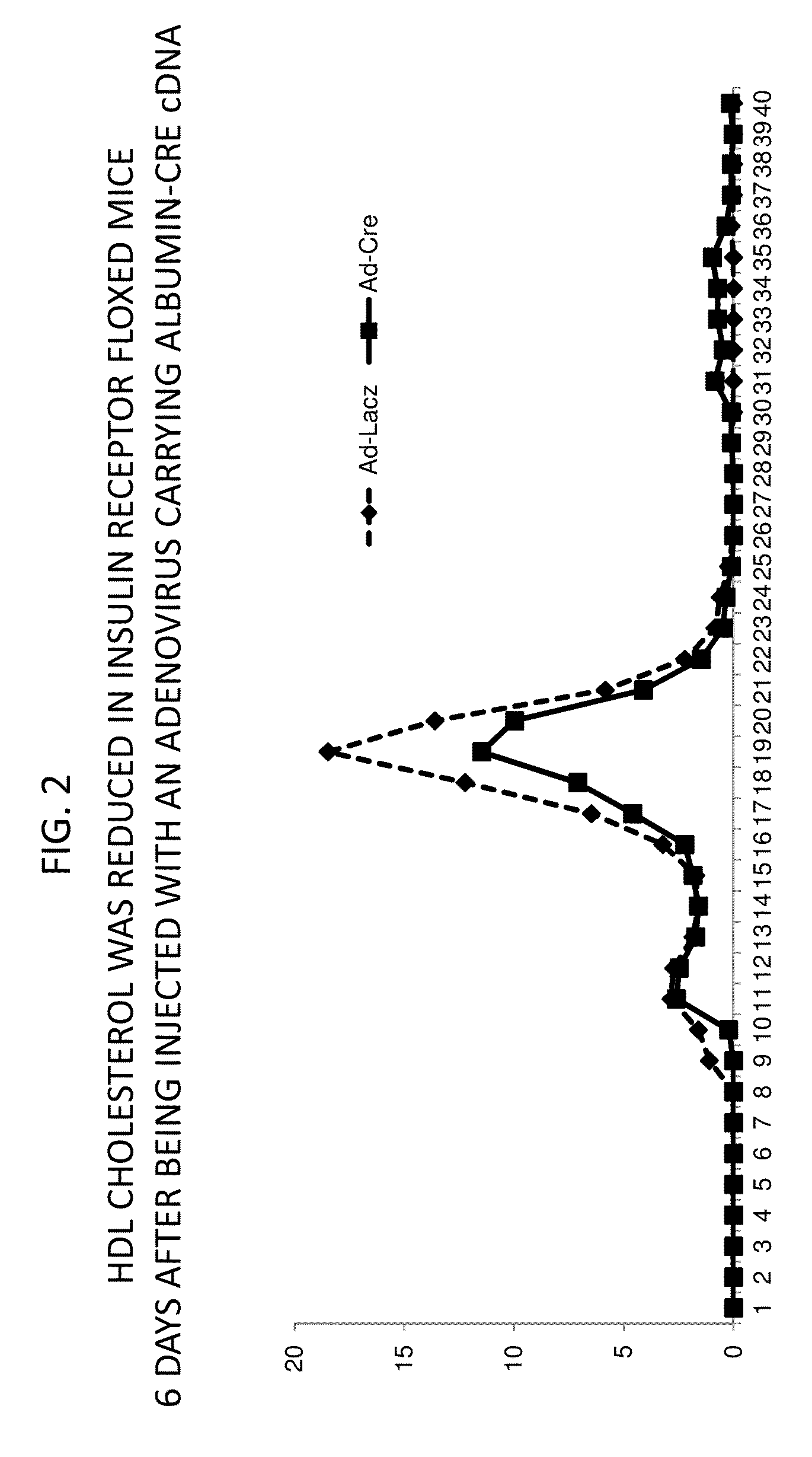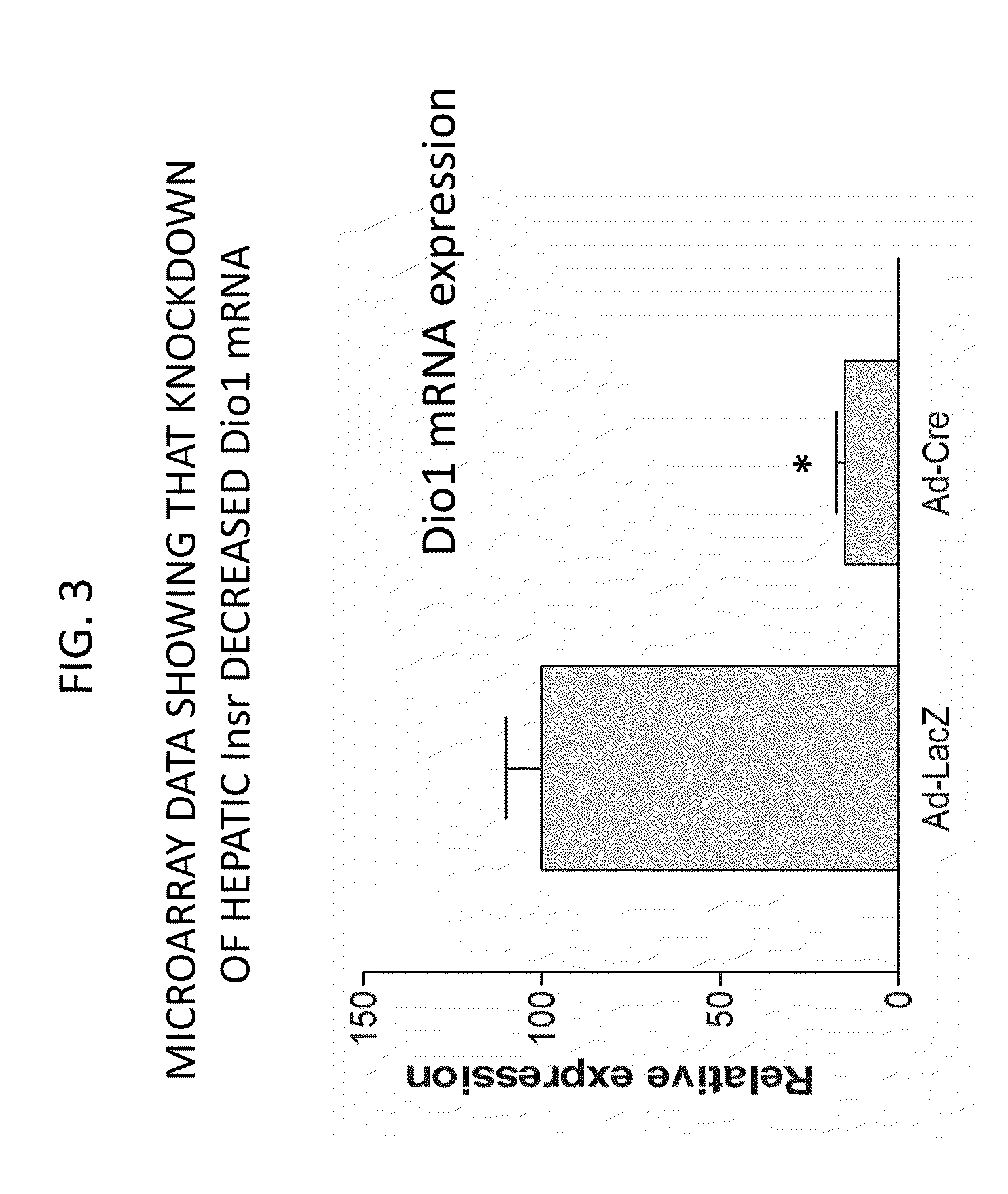Methods For High Density Lipoprotein Cholesterol Regulation
a high density lipoprotein and cholesterol regulation technology, applied in the field of high density lipoprotein cholesterol regulation, can solve the problems of significant unmet medical needs, no wholly satisfactory hdl-elevating therapies exist, and increase plasma, so as to increase dio1 or apoa-1 promoter activity, increase deiodinase 1 or apoa-1 protein expression, and increase the activity of the respective promoter
- Summary
- Abstract
- Description
- Claims
- Application Information
AI Technical Summary
Benefits of technology
Problems solved by technology
Method used
Image
Examples
example 1
Loss of Hepatic Insulin Receptors Was Accompanied By An Unexpected Reduction In HDL Cholesterol And An Increase In Dio1
[0061]FIG. 1 shows that LIRKO mice had reduced levels of HDL cholesterol levels by FPLC. 200 μl of serum was pooled from 4 h fasted LIRKO and Floxed mice and subjected to fast protein liquid chromatography (FPLC) using a single Superose 6 column (GE Healthcare). Proteins were eluted at 0.30 ml / min (elution buffer: 150 mM NaCl / l mM EDTA, pH 8). Forty fractions (0.5 ml) were collected and total cholesterol content in each fraction was determined by enzymatic kit (Wako diagnostic).
[0062]LIRKO mice also had reduced levels of plasma ApoA-1. 0.5 μl of serum from 4 h fasted 4 month old LIRKO and Floxed mice were run on SDS-polyacrylamide gel electrophoresis, protein bands on the gel were transferred to nitrocellulose membrane (Bio Rad). Incubation of anti-mouse ApoA-1 antibody (Calbiochem) with the membrane was performed in TBST including 0.1% Tween 20 and 2% nonfat milk ...
example 2
Insulin Signaling Was Restored By Overexpression of Akt, Which Signaling In Turn Increased Dio1 Expression
[0068]FIG. 7 shows that insulin signaling was restored by administering an adenovirus with cDNA for a constitutively active Akt to 16 week old LIRKO mice (as described in Biddinger et al. above). Restoration of insulin signaling markedly increased the expression of Dio1 as measured by qPCR. In these experiments, 16 week old LIRKO mice were injected intravenously with adenovirus encoding either a constitutively active form of Akt (myr-Akt) or LacZ. Mice were sacrificed and livers were collected on day 6 after injection. Total RNA were extracted, then reverse transcription and qPCR were performed as described above (FIG. 5).
example 3
Reduction of Insulin Receptor mRNA With siRNA Also Reduced Dio1 mRNA
[0069]In McArdle RH7777 rat hepatoma cells, it was observed that treatment with an siRNA for the insulin receptor resulted in marked reductions in both insulin receptor and Dio1 mRNA levels as shown in FIG. 6. In these RNA interference transfections, McArdle RH7777 rat hepatoma cells (cultured with DMEM, 10% FBS, 10% horse serum, 1% p / s) were seeded in six-well plates at 2.5×105 cells / well. A pool (40 nM final concentration) of two individual Mission siRNA oligonucleotides (SASI_Rn02—00261274, siRNA1, M SASI_Rn02—00261275, siRNA2, Sigma-Aldrich) was transfected into McArdle RH7777 (McA) cells using nanoparticle-based siRNA transfection reagent (N-TER™, Sigma-Aldrich) 16 h later. Mission siRNA Universal Negative Control (#1; Sigma-Aldrich) was used as a negative control. Cells were collected at 36-48 h after transfection. Total RNA were extracted, then reverse transcription and qPCR were performed as mentioned above ...
PUM
| Property | Measurement | Unit |
|---|---|---|
| pH | aaaaa | aaaaa |
| total volume | aaaaa | aaaaa |
| fluorescent | aaaaa | aaaaa |
Abstract
Description
Claims
Application Information
 Login to View More
Login to View More - R&D
- Intellectual Property
- Life Sciences
- Materials
- Tech Scout
- Unparalleled Data Quality
- Higher Quality Content
- 60% Fewer Hallucinations
Browse by: Latest US Patents, China's latest patents, Technical Efficacy Thesaurus, Application Domain, Technology Topic, Popular Technical Reports.
© 2025 PatSnap. All rights reserved.Legal|Privacy policy|Modern Slavery Act Transparency Statement|Sitemap|About US| Contact US: help@patsnap.com



